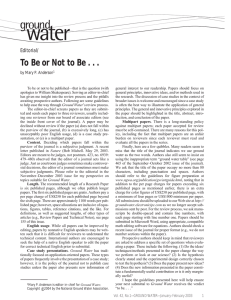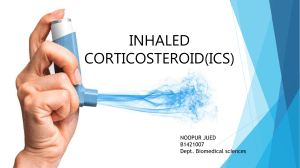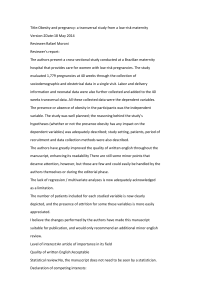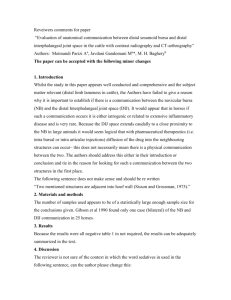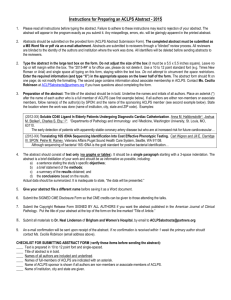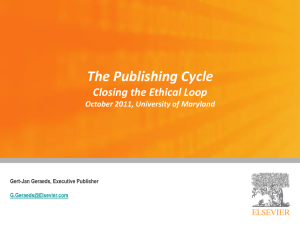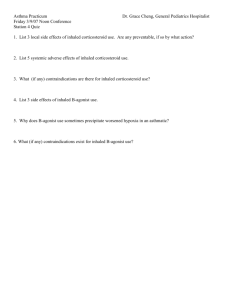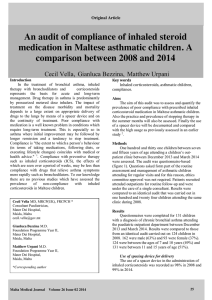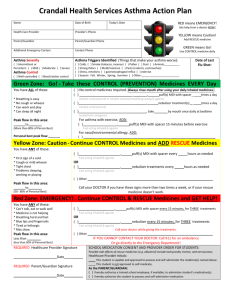Supplemental text file Eligibility criteria The specific inclusion criteria
advertisement
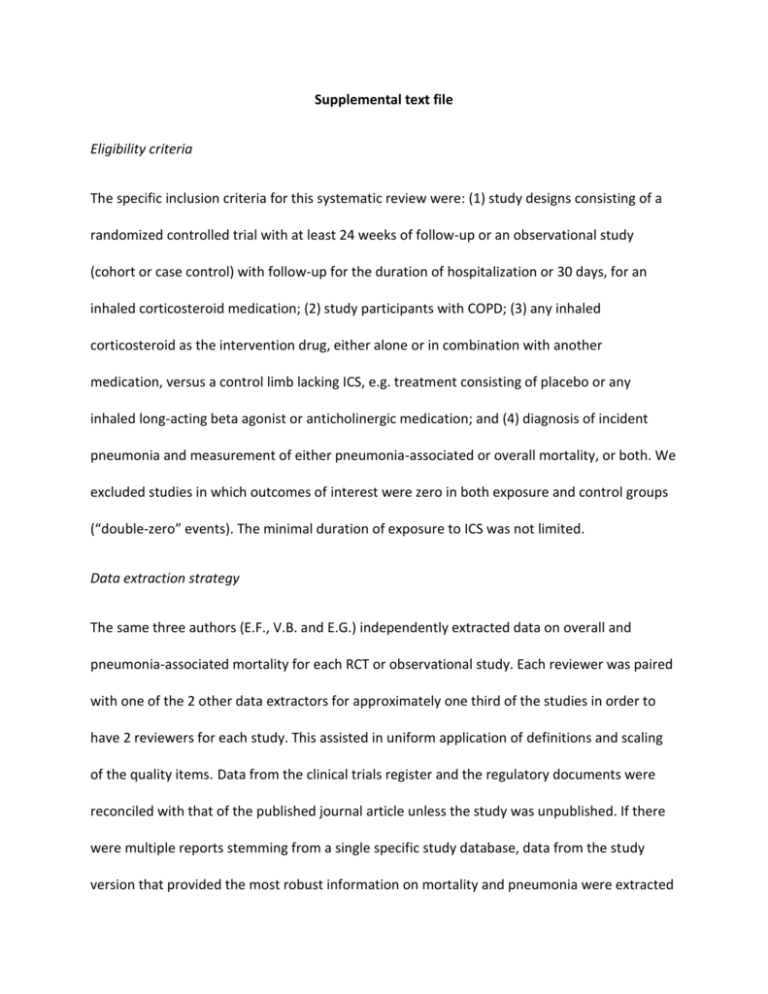
Supplemental text file Eligibility criteria The specific inclusion criteria for this systematic review were: (1) study designs consisting of a randomized controlled trial with at least 24 weeks of follow-up or an observational study (cohort or case control) with follow-up for the duration of hospitalization or 30 days, for an inhaled corticosteroid medication; (2) study participants with COPD; (3) any inhaled corticosteroid as the intervention drug, either alone or in combination with another medication, versus a control limb lacking ICS, e.g. treatment consisting of placebo or any inhaled long-acting beta agonist or anticholinergic medication; and (4) diagnosis of incident pneumonia and measurement of either pneumonia-associated or overall mortality, or both. We excluded studies in which outcomes of interest were zero in both exposure and control groups (“double-zero” events). The minimal duration of exposure to ICS was not limited. Data extraction strategy The same three authors (E.F., V.B. and E.G.) independently extracted data on overall and pneumonia-associated mortality for each RCT or observational study. Each reviewer was paired with one of the 2 other data extractors for approximately one third of the studies in order to have 2 reviewers for each study. This assisted in uniform application of definitions and scaling of the quality items. Data from the clinical trials register and the regulatory documents were reconciled with that of the published journal article unless the study was unpublished. If there were multiple reports stemming from a single specific study database, data from the study version that provided the most robust information on mortality and pneumonia were extracted with other contributing studies included in the bibliography. When specific data were missing and/or required clarification, the corresponding authors were contacted by electronic mail with one repeat request if needed (up to 2 attempts for each author). Three authors (E.F., V.B. and E.G.) were independently involved in all stages of study selection, data extraction, and quality assessment. All discrepancies found between 2 reviewers were resolved after the input of the third reviewer. Consensus was achieved in all cases. Study characteristics and quality assessment To adhere to principles of sound methodological quality, we developed a data collection forms based on Cochrane Collaboration risk assessment tool for RCTs and Newcastle-Ottawa scales for cohort and case-control studies. We did not derive any specific scoring but rather used terms: “low risk” and “high (or severe) risk” of bias at the study level.
